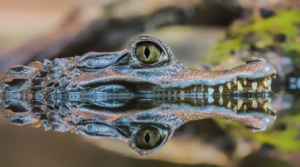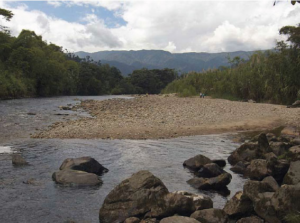In Ecuador there are several popular celebrations of great significance for the different cultures of our country, among them we have the festivities of San Pedro, which has a cultural value in the Sierra Norte (north of the Andes). There are mestizo, indigenous and Afro-Ecuadorian celebrations. In the Cayambe canton, the festivity dedicated to the patron saint San Pedro and in turn, to the celebration of Inti Raymi, which is the harvest time and thanks to the sun and the fertility of the Pacha Mama (mother earth), presents 8 days from June 21 to 29.
As it happens in many towns of the Andean world, the main celebration in Cayambe is the Inti Raymi, which corresponds to the change of solstice, a celebration that has indigenous roots and is intended to thank the Inti, the Father Sun, for having fertilized the Pachamama, that is to say, the mother earth. This celebration marks the beginning of harvest time. When the Spaniards arrived, this celebration was syncretized and became known as the feast of San Pedro, which is the name of the patron saint of the Cayambe Canton. After the mass on June 29, at noon, the communities light the party and move without interruption to the archaeological monument of Puntiatzil, where they thank the Inti and Pachamama.
Currently, after mass on June 29th, the communities begin the festivities and move with songs and dances to the Central Plaza and end at Punyatzil (the sacred site of the Kayambis). Punyatzil is an archaeological complex of great importance in the festivities of San Pedro and the Sun in the Middle of the World, due to the rituals that take place on June 29, the different communities of the Canton, dance around the Central Plaza or park July 23 and then go to the complex for the election of the Ñusta and thank the Pacha Mama for the crops received through songs, picaresque songs and traditional dances in the sector, produced by wind instruments, etc..
The Sampedrinas festivities coincide with the June solstice, the major celebration for the Andean cosmovision, a date of special significance, because the sun’s rays fall perpendicularly and it is believed that in the central square of Cayambe, several spirits gather there. On this day several indigenous communities come together to celebrate a great feast, which has been held since the eighteenth century.
Each community of Cayambe is present with their own songs, dances and costumes. It is very pleasant to listen to the famous galladas that throughout the night delight tourists with their songs to the rhythm of the guitar. The dawn will bring with it a prize for the gallada that has performed best throughout the festivities. Thus the following year everyone will try to win and become the kings of the song, the songs and the inevitable “guarito”.
Cayambe will welcome travelers to celebrate the beginning of the harvest season with dances, comparsas and the presence of characters such as the aruchico, the chinuca and the diabluma. The dancers sing songs and dance to the sound of guitars, rondines and flutes, which fill the spaces of Cayambe with multiple colors. Additionally, those who visit Cayambe, will be able to know and enjoy all the tourist wonders that this destination has such as the Cayambe volcano, community tourism, inns and its rich cuisine prepared with local products such as biscuits, leaf cheese, manjar de leche and roasted guinea pig.
Cayambe is very popular for its bullfighting tradition, every year in its popular festivities of San Pedro can not miss the bullfight, the square is built with planks and a grid, the same that began to build in 1920 and finished 8 years later, its inhabitants preserve this tradition and passed from generation to generation.
Each year begins with the “chagra” walk through the streets of Cayambe inviting locals and tourists to enjoy six bullfights, chagras arrive to the place from various communities of the town, also fans from various parts of the country attend.
The main characters that adorn this festivity are the aruchico, the chinuca, the clown and the diablo huma who sing the songs and dance to the sound of guitars, rondines and flutes, manifestations that turn these traditions into a multicolored scenario that are complemented with fireworks, retretas, popular bulls and parades.
Dress of the dancers
Chinuca: Chinuca is a popular character of the Cayambe festivities, she represents the happy, beautiful woman who sings and dances, she is the jealous girlfriend of the Aruchico.
Her costume is composed of: Skirt of showy colors with embroidery and special pleats of approximately one centimeter wide called “center”, petticoat or bottom, embroidered blouse, hat with a silk scarf that is displaced throughout the back taken from the top of the hat. Part of the elegance of their most important garments are the embroidered shawls or “fachalinas”, necklaces or “huallacas” that have a similarity with gold seeds, that the bigger they are, the more they represent the social economic power of the wearer, earrings or “zarcillos”, waist sashes or “chumpi”, cabuya espadrilles.
Aruchico: They represent the sorcerers or sorceresses, supporters of good and positive attitudes, and that is why the bells are used to ward off evil spirits and their negative influence.
As clothing they wear a zamarro of goat leather, they wear a hat full of colored ribbons and mirrors, on their head that moves on their back they wear a large handkerchief of colored silk. The most traditional hat is the one in which the front part is lifted and fastened to the cup in which a mirror is placed. He wears a mask made of wire mesh, additional they wear two crossed colored scarves from the shoulders to the waist. The aruchicos carry on their backs the “cincerros”, which are twelve bronze bells, hung on a leather. These bells serve as an incantation to ward off evil spirits.
Clown: The clowns with their colorful and colorful clothing are used to go in front of the group or integrated to it, with the purpose of “giving the lesson in each corner”, in a humorous way, during the parade route along the city or town that organizes the celebration.
His clothing is a multicolored full-body bloomers with mask (usually white with a large red nose), hood and chorizo, he covers his hair and back with a large silk handkerchief.
The diabluma: is a being that according to tradition was not initially recognized as a devil but only as a beech or aya. According to the specialized portal Diablos Festivos de la Américas, it was thanks to the syncretism with the Catholic tradition that he received the name of devil.
He wears a white shirt, white pants, held by a sash or chumbi. At the waist he wears a scarf over this is located the zamarro across the chest carries a small scarf or macana, uses espadrilles with white uppers.




